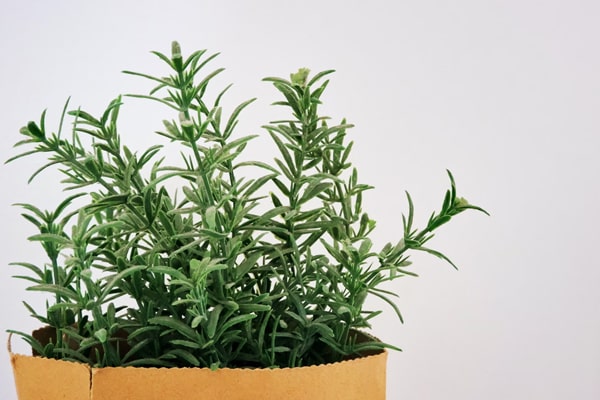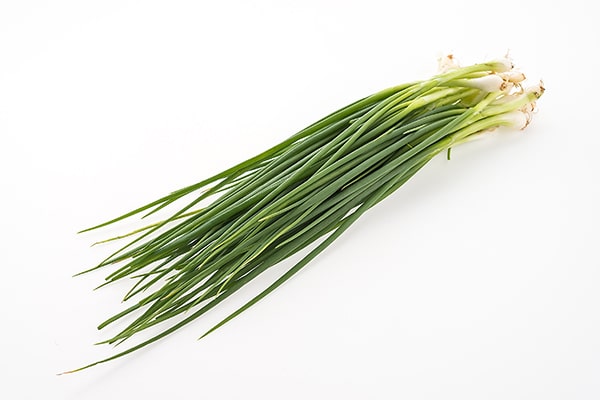No better way to elevate your everyday dishes than adding fresh, delectable herbs. Every home should have some, especially for people who LOVE to cook! Apart from improving the aroma and flavor of your favorite dishes, fresh herbs provide a boost of nutrients to your everyday meals. Most herbs are packed with antioxidants that promote better health.
Now imagine plucking fresh herbs right by your kitchen window, from your very own herb garden. It’s easy when you use an herb starter kit! With an herb kit, you can turn any indoor or outdoor spot into a mini herb garden. As long as the spot gets a lot of sun, you can look forward to fresh herbs in no time at all.
The Ultimate List of Herbs You Must Have in Your Kitchen
There are many herbs to grow using an herb garden kit, but you can stick with the herbs that you use all the time. Here’s our ultimate list of herbs that you can grow for your kitchen:
Basil

Basil is one of the most popular, if not the most popular, herbs in the world for a reason. It’s versatile, flavorful, and an essential seasoning for many cuisines, mainly Italian and East Asian cuisines. There are over 150 varieties of basil, but the most commonly used are sweet basil, lemon basil, Thai basil, and purple basil. Basil is the main ingredient in pesto sauce and is often used to season pizzas, pasta, and stews. It’s also mixed in cocktails and juices.
Basil is so easy to grow. As long as the plant gets at least 6 hours of sunlight every day, it will thrive. Basil doesn’t require frequent watering too, just water when the soil feels dry. Since it doesn’t require any babying at all, basil is perfectly beginner-friendly.
Thyme

Second only to basil’s popularity is thyme. It’s best known for its delectable aroma that complements meat and poultry. Thyme is also used to season veggies and seafood, so it’s pretty versatile. This herb is quick growing, and if you find yourself having more thyme than you need, just dry or free the fresh herbs for future uses.
Thyme is a heat-loving herb and will do well even with a little bit of neglect. Set a pot near a sunny window, and it's all good. This drought-resistant perennial does not need frequent watering at all. Water only when the soil is dry.
Rosemary

Rosemary is often associated with holiday cooking because it’s often used to season holiday dishes like turkey stuffing, roast beef, roasted chicken, etc. Also, rosemary is a popular Christmas plant, along with mistletoe, so it's a great herb to give away as gifts during the Christmas season.
Rosemary has plenty of uses in the kitchen. It’s easy to grow too, so you can look forward to aromatic dishes everyday once you have a rosemary bush growing nearby. Rosemary doesn't require rich soils; it thrives in sandy soil. It will, however, require at least 6 hours of sunlight. Rosemary loves warm, humid growing environments and cannot stand extreme cold.
Sage

Sage has a distinctively sweet, earthy flavor and aroma that complements savory dishes. It's best used to bring out the flavors of heavy, rich dishes like cured meats, stuffing, creamy pasta, etc. You can add sage to soups and roast dishes. It's also used to season sauces, salads, and fried dishes. You can also use the fresh, chopped leaves to make herbed butter.
Sage loves the full sun but will do well in places that only receive partial or dappled light. But when grown in shady spots, the flavor won’t be as robust. This herb loves well-draining rich soil but will also thrive in sandy soil.
Chives

Chives is another versatile herb that adds a zesty flavor to soups, salads, sandwiches, and fried dishes. The fresh flavor cuts through the richness of fried dishes, so it’s a popular topping in Asian cuisine. The bright green color of chives makes any dish look good!
And just like basil, chives are a quick-growing herb - it doesn’t take much for chives to thrive. Chives grow best in the full sun with well-drained, rich soil. You can grow this herb indoors and outdoors. If you're growing chives indoors, set the pot in a place that receives bright sunlight during the day and some shade in the afternoons.
Oregano

Oregano is used for its sweet, fresh green flavor. It's a popular herb in Italian, Turkish, Mexican, and Greek cuisine. Oregano is quite versatile; it’s used to season everything from grilled meats to pizzas. It can be used fresh and dried!
Just like most herbs, oregano loves the full sun and well-draining soil. It is a resilient herb, growing natively to the rocky regions of the Mediterranean and Europe. It doesn't grow too big, so it is ideal in container gardens and raised beds too.
Dill

Dill is the herb of choice when seasoning all sorts of seafood. It has a light, refreshing flavor and vibrant green color, making grilled fish, veggies, and salads look even more delectable. Dill is also used to season meats, soups, sauces, and sandwiches. Dried, dill develops an intense flavor, although fresh dill has a more intense aroma.
Dill is a fairly resilient herb. It can withstand a bit of neglect and could thrive even in poor soil conditions. This herb does well even in hot, humid places and in cool weather. It does, however, require at least 6 hours of sunlight to thrive. It loves loamy, well-draining soil.
Peppermint

Peppermint is a mainstay in Middle Eastern and Greek cuisine. It is often used to season lamb and poultry. It is also a popular herb for salads, sauces, soups, and side dishes. Apart from seasoning everyday dishes, peppermint is also added to drinks, particularly teas, coolers, mocktails, and cocktails. It's also prized for its skin-caring benefits.
Peppermint is incredibly adaptable; it can survive most weather conditions, even hot, humid environments, although it thrives best in cool weather. It loves loose, organically rich soil but could thrive in sandy and clay soil too. Peppermint requires the full sun with part shade in the afternoons. It grows and spreads quickly though, so regular pruning is needed to maintain its size and prevent it from overtaking the garden.
Bay Leaf

A staple in Asian, French, Indian, and Mediterranean cuisine, bay leaf is often dried, but it’s also fabulous to use fresh! This herb has an intense aroma and a distinct herbaceous flavor with slightly bitter notes. It’s used to season stews, soups, and sauces. The bay leaf plant grows best in hot, humid climates. It loves the full sun but will also thrive in partially shady spots. Grown indoors, the bay leaf will need bright light and occasional misting. It doesn’t require frequent watering but keeps the humidity in check.
Tarragon

Rounding up our list of must-have culinary herbs is tarragon. Prized for its robust aroma and bittersweet notes, tarragon is often used to season meats, poultry, and seafood. There are three common varieties to choose from: French tarragon, Mexican tarragon, and Russian tarragon. Tarragon loves the full sun with partial shade in the afternoon. It will develop a more intense flavor when planted in a sunny spot. It requires light, well-draining sandy soil.
There you have it, the top 10 herbs that every kitchen should never be without.
ECOgardener Herb Kit to Get Started with Indoor Gardening
Do you love using fresh or dried herbs for seasoning your favorite dishes? What herbs do you have in your pantry? Whether you grow herbs using an herb kit or starter plants, there’s no doubt that building an herb garden is the best way to get a fresh supply of herbs.
If you want to grow fresh herbs yourself, get our ECOgardener herb kit today!


